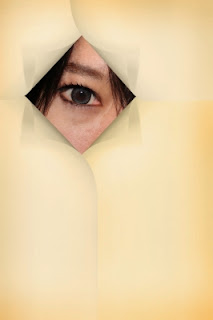When
we think of people suffering from panic attacks we tend to think it is only adults
that are dealing with this. But there are many children that are suffering
panic attacks also.
Panic
disorder can come across different in children and adolescents because they
tend to report the basic symptoms of their panic attacks instead of the
psychological symptoms. Their behaviour can be confusing because they appear to
be suddenly scared or upset with no identifiable reason.
Adolescents
seem to be better able to describe what they experience after a panic attack
has subsided. Younger children may not be able to explain what their symptoms
are correctly as they may relate it to something they think triggered it. Also
they may not be able to explain the intense fear they experience during their
panic attack.
Panic
disorders are an unpredictable event. If you have a child that reacts
predictably to something such as being scared of dogs, then that would be a
phobia not a panic attack. A phobia is a fear triggered by objects or
situations. So if your child panics and there appears to be no thing or
situation involved you may be dealing with a panic attack.
If a
panic disorder is left untreated it can lead to limitations in other areas of a
child’s life. Being able to function at school, around their peers and even at
home with the family may be a problem for them. At the extreme a child could
develop thoughts of self-harm in response to severe anxiety. A clinician trained
in these areas can help make a diagnosis to help the child cope with their
situation.
The
symptoms a child may display are shown below. They may show more symptoms while
at home because there is less pressure on them to hide them than while at
school for example.
1. Episodes
that are accompanied by symptoms such as dizziness, chest discomfort, rapid
heart rate, sweating, choking or nausea.
2. Constant worry about future panic attacks.
3. The
child avoids places where he/she feels an attack may take place.
4. Recurring
sudden episodes of physical discomfort or fear that are short lived.
5. Fear
of being in a location that would make the child feel trapped if a panic attack
occurred. This could include crowds, high locations or enclosed spaces.
6. Recurring
episodes that give the feeling of loss of control or being detached from
reality or ones body.
7. Not
wanting to participate in activities, avoiding people or having lack of self
esteem.
8. Being
frightened by the unpredictability of having a panic attack.
9. They may have
difficulty explaining the Symptoms of Panic Disorder in Children they are experiencing
or what their worries are.
10.
Experimenting with drugs or alcohol or depression that brings them to not
wanting to go on any more.

